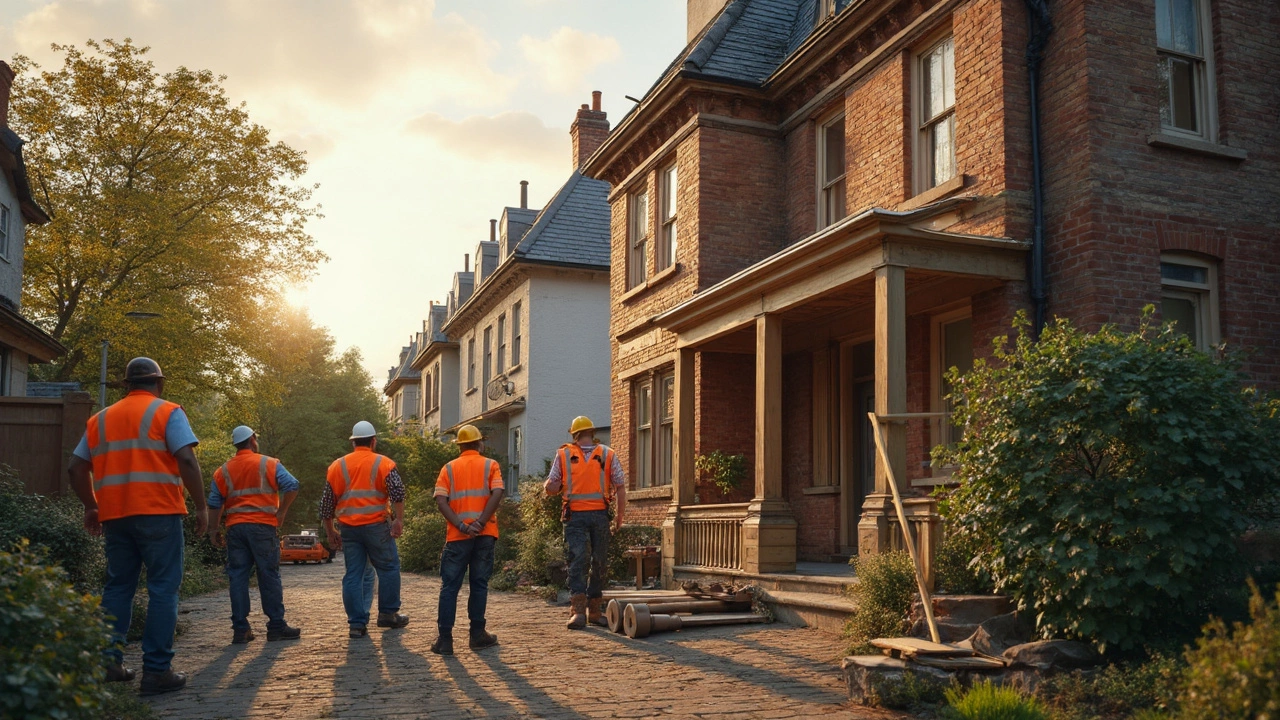Construction Projects: Practical Tips & Latest Trends
If you’re thinking about starting a construction project, the first thing to do is write down what you want to achieve. Are you adding a new room, fixing a roof, or building a whole house? Knowing the end goal helps you pick the right team and keep the budget in check.
Plan Your Project Like a Pro
Start with a simple plan. List every major step – design, permits, demolition, structural work, finishes – and give each step a realistic time frame. Use a spreadsheet or a free app to track progress. When you see where a delay might happen, you can act fast and avoid costly overruns.
Don’t forget to ask for multiple quotes from contractors. A cheap quote can hide hidden costs, while a higher quote might include better materials or a stronger warranty. Compare what’s included, not just the price, and always check references before you sign anything.
Common Challenges and How to Beat Them
Moisture problems, like mold, pop up more often than people think, especially in new builds or renovations. Keep the site dry, use proper ventilation, and choose moisture‑resistant materials where needed. If you spot any signs of mold early, call a specialist before it spreads.
Foundation issues can ruin a project quickly. Look for cracks in walls, doors that don’t close properly, or uneven floors. If you notice any of these, get a structural engineer involved right away. Early detection saves money and keeps the building safe.
Roof replacements are another big expense. Before you commit, ask the contractor to break down the cost – materials, labour, waste removal, and any extra work like scaffolding. Knowing the details helps you spot hidden fees and decide if the price is fair.
Every construction project benefits from regular communication. Hold short weekly check‑ins with your builder, ask for photos or video updates, and raise any concerns immediately. This keeps everyone aligned and reduces the chance of misunderstandings.
Finally, think about the “after” stage. Once the build is done, a proper handover document lists warranties, maintenance tips, and any remaining snag items. Keeping this record organized makes future repairs easier and protects your investment.
Whether you’re tackling a small bathroom upgrade or a full house build, the same basics apply: clear goals, solid planning, smart budgeting, and open communication. Follow these steps and your construction project will run smoother, stay on budget, and end with a space you can be proud of.
Understanding What Falls Under Commercial Use in Construction
- Gavin Whitaker
- |
- |
- 0
In the realm of construction, 'commercial use' covers buildings intended for business activities, like offices, shopping centers, and industrial facilities. Understanding zoning laws and building codes is crucial for ensuring compliance and avoiding fines. This article delves into what constitutes commercial use, providing clarity on regulations, different building types, and tips for successful project navigation. Learn about the impact of zoning and how to efficiently manage commercial construction projects.
View moreWhy People Choose to Hire Contractors
- Gavin Whitaker
- |
- |
- 0
Hiring contractors is becoming increasingly popular for home renovations and construction projects. Contractors bring expertise, efficiency, and access to resources that individuals might not have. They manage the project from start to finish, ensuring quality work and compliance with regulations. Discover why working with contractors can save you time and stress in your building endeavors.
View moreUnderstanding Non-Commercial Use in Construction Projects
- Gavin Whitaker
- |
- |
- 0
Determining what is considered 'not for commercial use' within commercial construction is critical for compliance with zoning laws and building codes. This article explores the concept of non-commercial use and provides clarity on what activities and projects fall outside this designation. Readers can gain insight into how zoning laws impact construction projects and the importance of adhering to local regulations. Additionally, it discusses the potential benefits and risks associated with non-commercial developments.
View more

